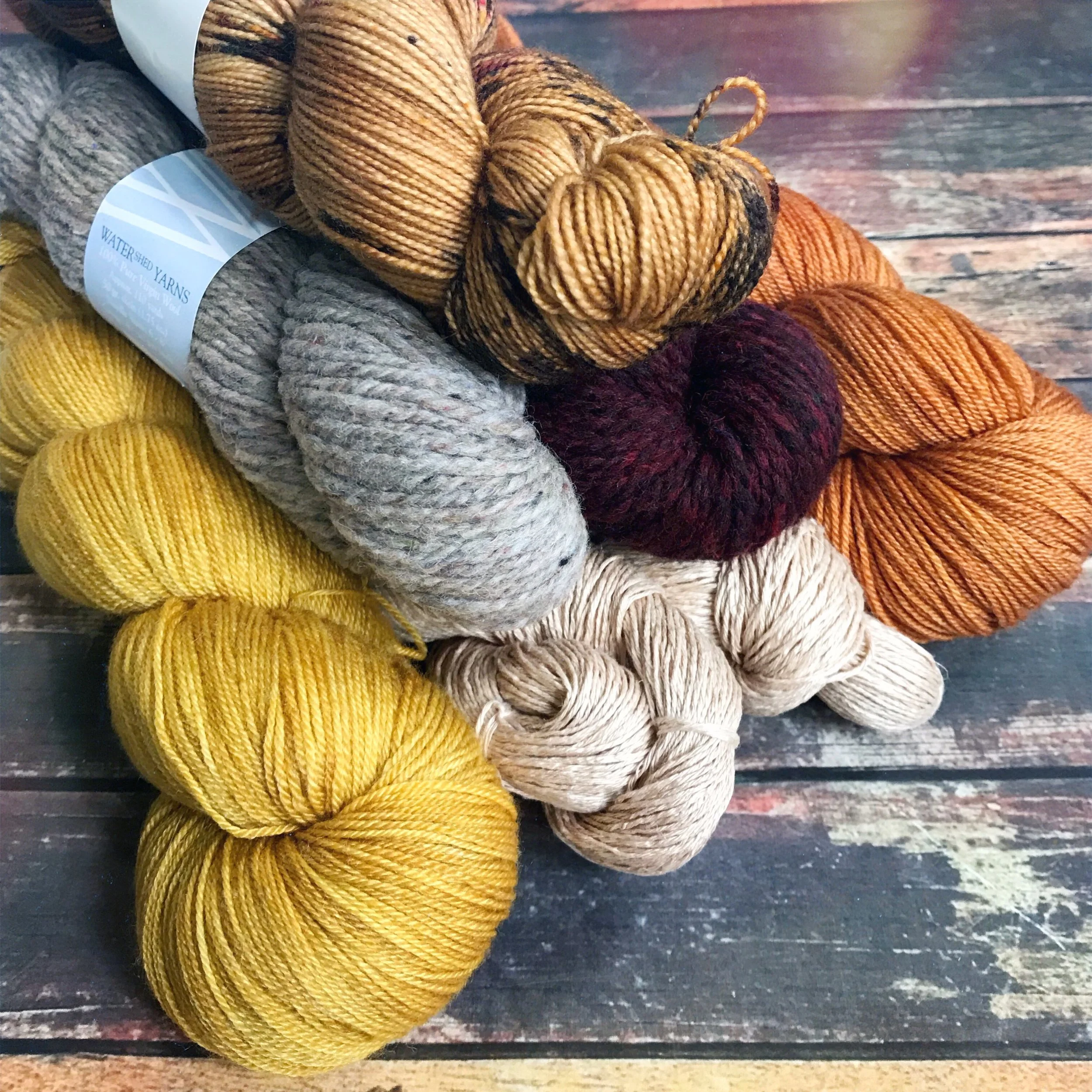Pattern Support: 10 Tips for Success
As a knitter, the day may come where you need to request pattern support, AKA, ask the designer a question. Maybe something in the instructions is unclear, maybe the stitch counts seem off, maybe your knitting just doesn't look right. And most designers provide contact information for this very reason--we want you to be happy with whatever you're knitting, and whether something in the pattern is simply unclear or there's an actual error, we want to clarify it or fix it so you and future knitters have the best experience you can.
In the 3 years or so I've been answering pattern support questions, 98% have been perfectly polite, clear, straightforward and easily resolved. But it never hurts to hedge your bets--so I've create a few points regarding pattern support. Maybe you've had a bad experience, maybe you've been hesitant to contact a designer, maybe you just want to tuck this away for future reference--some quick tips to ensure the best exchange and outcome when you contact a designer for support.
- Read the pattern before casting on. Nothing makes me feel worse than telling a knitter she skipped over some instructions earlier in the pattern and now has to rip back--so my first bit of advice is to read through to get a sense of the pattern before you start. Some garments have unique constructions, sometimes shaping on different parts takes place at the same time, sometimes you need to knit parts in a certain order for everything to turn out correctly, so it's best to give everything a read through before you begin to avoid problems later.
- Double check the pattern. If you're wondering about an abbreviation, symbol or technique, please just double check the abbreviations list or other segments of the pattern and see if it's there. As with pretty much any job, reiterating information that's already been provided is frustrating.
- Use the right contact method. Every pattern I publish, and nearly every pattern I've ever come across, indicates very clearly how to contact the designer for pattern support. Unless the designer specifically indicates that it's their preference, leaving comments on blog posts or Ravelry pattern pages is not the way to request support. First, because designers don't always see those comments right away (maybe never), and second, because you (most likely) need to provide some of the text of the pattern in order to indicate where you're having a problem--sharing the contents of a paid-for pattern publicly is a no-no.
- Be polite. Even if you think there's an error, there's no need to be accusatory, hurl insults or YELL. Designers are human. Most patterns are tech edited and test knit and sometimes errors still sneak through. I'm certain if you're reading this, you would never dream of being so rude, but every. single. designer I know has gotten at least one incredibly nasty email from someone absolutely livid about a "mistake" in a pattern. The rude knitters are out there . . . somewhere.).
- Give details. "Hi on page 4 it says P3, did you mean K3?" Hmmm, going to need a bit more information here--page 4 of a book? A pattern? What pattern? What row? What part of that row? We'll be able to answer your question much more quickly if we have all the information right up front, so try to be as detailed as you can!
- Don't do ... whatever this is: HI FOR THE HAT CAST ON IT SAYS TO CAST ON X STS BUT THAT CAN'T BE RIGHT BECAUSE THAT'S WAY TOO FEW STITCHES FOR A HAT SO THERE MUST BE AN ERROR PLEASE EMAIL ME IMMEDIATELY SO I CAN START MY HAT BECAUSE I CLEARLY CAN'T USE THESE SUPER WRONG DIRECTIONS THAT MAKE NO SENSE EVEN THOUGH 16 OTHER PEOPLE HAVE KNIT THIS HAT WITH NO PROBLEMS AT ALL MORE WORDS MORE WORDS NO PUNCTUATION EVER
Yes, I got an email like this once--the ALL CAPS, the complete absence of punctuation, running on and on and on . . . --by the time I figured out what the question was, I'd lost the will to live. - Keep an open mind. Based on my own experience as well as speaking to other designers, 9 times out of 10, the problem in question is not an error, but rather a misunderstanding.
People are wired differently. Something perfectly clear to one knitter may be confusing to another--I see this surprisingly often in my test knits, where one knitter has no trouble with part of a pattern while another finds it unclear. Designers do their best to write clear, concise patterns using standardized terminology, but sometimes you can't please everybody--especially when attempting to create a pattern that's clear enough for beginners, but concise enough for experienced knitters. - Keep expectations reasonable. There's only so much you can expect from a $6.50 pattern and I'm afraid it doesn't include knitting lessons. Most designers, myself included, will indicate on the Ravelry pattern page and/or the pattern's cover page what techniques you need to know (or be willing to learn) to create the pattern, and will also try to explain special techniques clearly, link to tutorials, or even create our own tutorials, insofar as possible, but some things just can't be taught in a pattern (or via email). If you just can't get the hang of Kitchener Stitch, or find short rows mystifying (who doesn't?), your best bet is probably to ask a knitting friend or seek help during knit night at your LYS, rather than exchanging multiple emails with the designer.
- Be patient. Designers often work odd hours, not your standard 9-to-5. We take vacations too--and very, very few make enough money from the business to hire additional staff! In addition, sometimes we need time to look into the issue before we can write a clear response. I generally respond to pattern support questions within 24 hours (except on weekends), but every designer is different. It's not unreasonable to wait a day or two for a response--and in the meantime, if the designer has an active Ravelry group, consider taking your question there. Other knitters who have completed the pattern might be able to help you.
- Don't request a refund. A digital download like a knitting pattern is unique because there's simply no way to return it. You have it forever, and can use it anytime you like--even if you claim you've "changed your mind" and no longer like the pattern (yep, I've gotten that email). Even if there's an error, it does not render the pattern useless--corrections are made, errata are issued and the pattern remains usable. So sorry, but all sales are final.
What do you expect from a designer in terms of support? What has your experience been when seeking pattern support--good, bad, ugly? Please share in the comments--an open dialogue is key to working toward the best outcome for everyone!
If you enjoyed this post you may also like . . .






